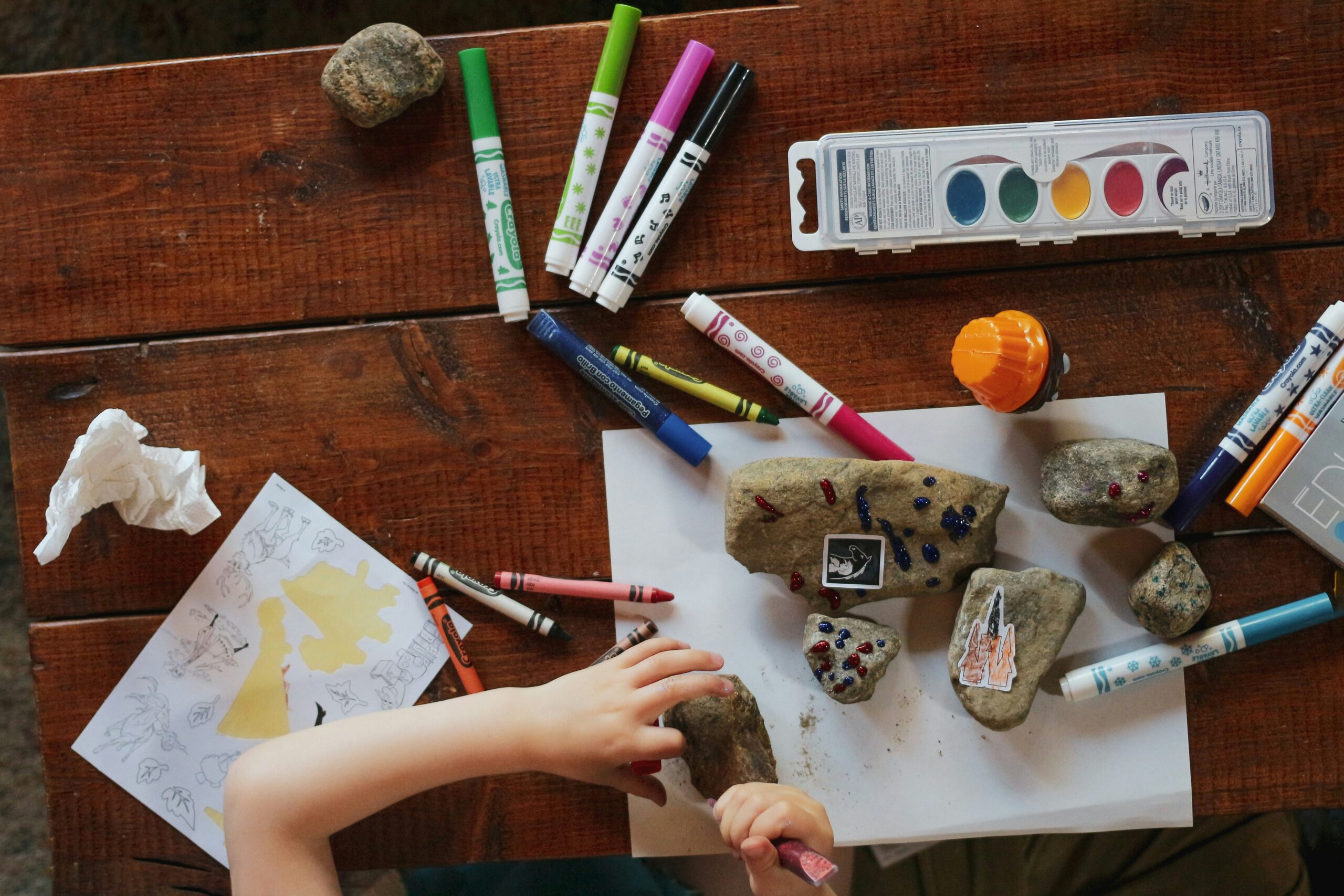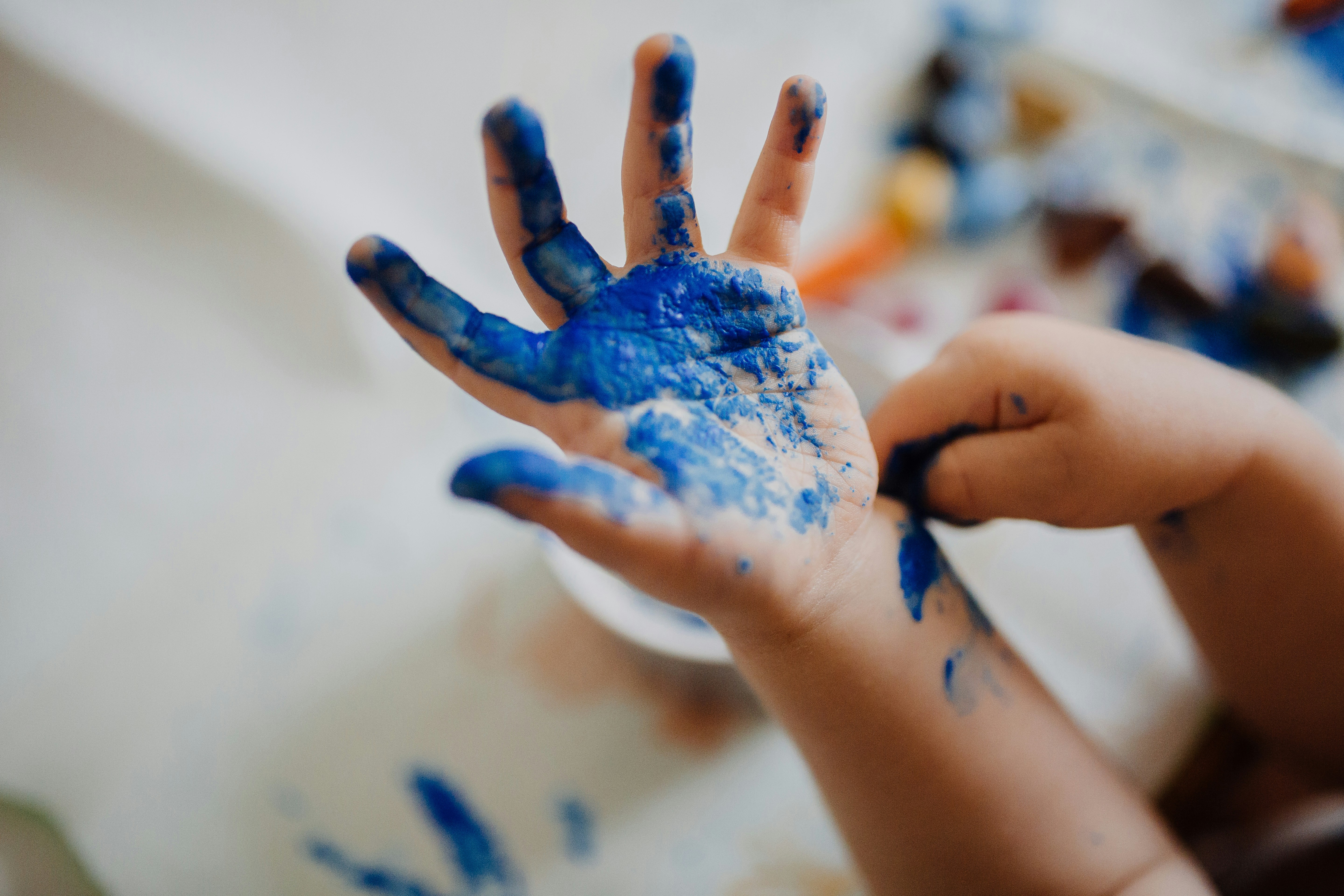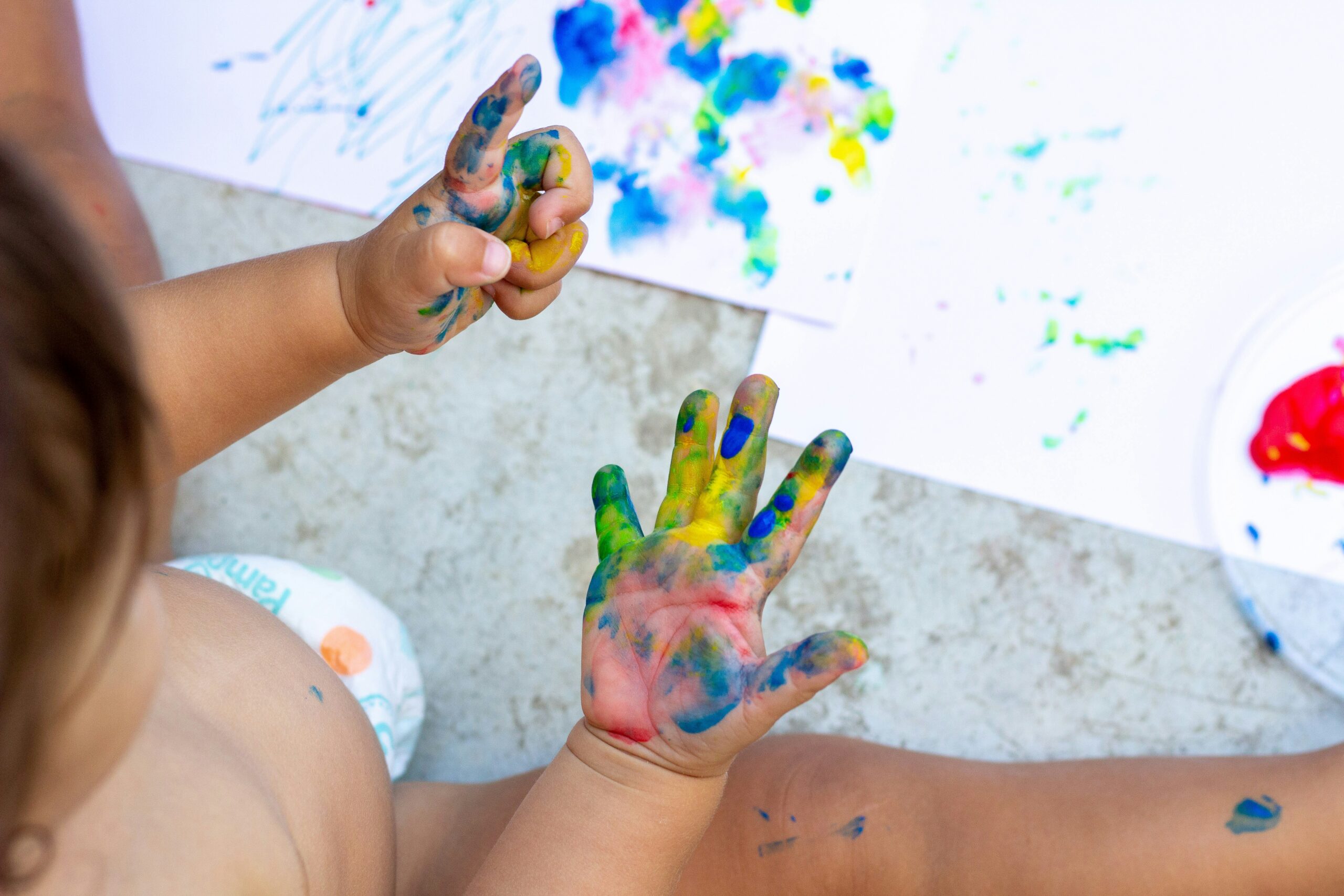Springtime is a delightful opportunity to explore the connection of seasons with art. Encouraging creativity, enhancing fine motor skills, and inspire self-expression for young minds can give children the chance to understand the world around them. The following activities provide structured yet flexible opportunities for young learners between 1 and 5 to explore artistic expression through indoor and outdoor experiences while developing essential cognitive and motor skills.
Indoor Activities
- Finger Painting Exploration
Facilitate sensory-rich experiences with non-toxic, washable finger paints. Provide large sheets of paper or a plastic-covered surface to minimize mess while allowing children to experiment with colors and textures. Introduce additional elements that are Spring-inspired, such as leaves or moss, to create varied patterns and enhance tactile engagement.
Skills Developed: Sensory exploration, color recognition, fine motor coordination, creativity
- Homemade Playdough Sculpting & Imprinting
Guide children in creating homemade playdough using a simple mixture of flour, salt, water, and food coloring. Offer child-safe tools found in nature such as pine cones or rocks to promote fine motor development while encouraging imaginative sculpting and shape formation.
Skills Developed: Hand strength, fine motor skills, creativity, spatial awareness
- Collage Composition
Encourage children to construct Springtime focused collages using an assortment of materials that they have found during an outdoor exploration. Provide glue sticks or non-toxic glue to support safe handling and assembly while designing their ow raincloud or recreating their favorite flower. This activity strengthens creativity and precision while fostering decision-making skills.
Skills Developed: Hand-eye coordination, decision-making, creativity, problem-solving

- Watercolor Exploration
Introduce young learners to watercolor painting using high-quality, thick paper. Demonstrate color blending techniques and encourage the creation of both abstract and representational imagery like a rainbow. Incorporate a crayon-resist method by drawing with white crayons before applying watercolor for an engaging discovery of mixed media effects.
Skills Developed: Color blending, fine motor skills, creativity, early science concepts (absorption, resistance)
Outdoor Activities
- Sidewalk Chalk Creations
Provide children with jumbo sidewalk chalk to create expressive drawings on pavement surfaces. Encourage the exploration of shapes, letters, and numbers, or facilitate interactive activities such as hopscotch and tic-tac-toe to integrate artistic play with early learning concepts.
Skills Developed: Gross motor skills, pre-writing skills, spatial awareness, creativity
- Nature Printmaking
Engage children in collecting natural materials such as leaves, flowers, and pinecones for use as stamping tools. Encourage observations of texture and shape variations as they press these materials into paint and onto paper, fostering an appreciation for natural patterns and symmetry.
Skills Developed: Sensory exploration, pattern recognition, creativity, environmental awareness
- Spray Bottle Painting
Enhance fine motor skills and creative exploration by providing spray bottles filled with diluted, non-toxic paint. Encourage children to experiment with different angles and pressure levels while spraying onto large sheets of paper or cardboard, resulting in unique abstract effects.
Skills Developed: Hand strength, coordination, creativity, cause-and-effect understanding

- Mud Painting Exploration
Incorporate natural elements into artistic expression by creating paint using a mixture of dirt and water. Allow children to use paintbrushes, sticks, or their fingers to design images on cardboard or stones, promoting a hands-on connection with natural materials while encouraging sensory exploration.
Skills Developed: Sensory integration, fine motor skills, creativity, environmental awareness
These thoughtfully designed art activities provide early educators with valuable tools to engage young learners in creative expression while supporting cognitive and motor skill development. By integrating both indoor and outdoor artistic experiences, educators can foster a rich and dynamic learning environment for young children.
Artistic exploration at an early age not only sparks joy but also lays the foundation for lifelong learning and creativity. Whether indoors or outdoors, these activities provide endless opportunities for discovery, self-expression, and growth. So grab some paints, chalk, or even mud, and let the creativity flow—every masterpiece starts with a single stroke!


